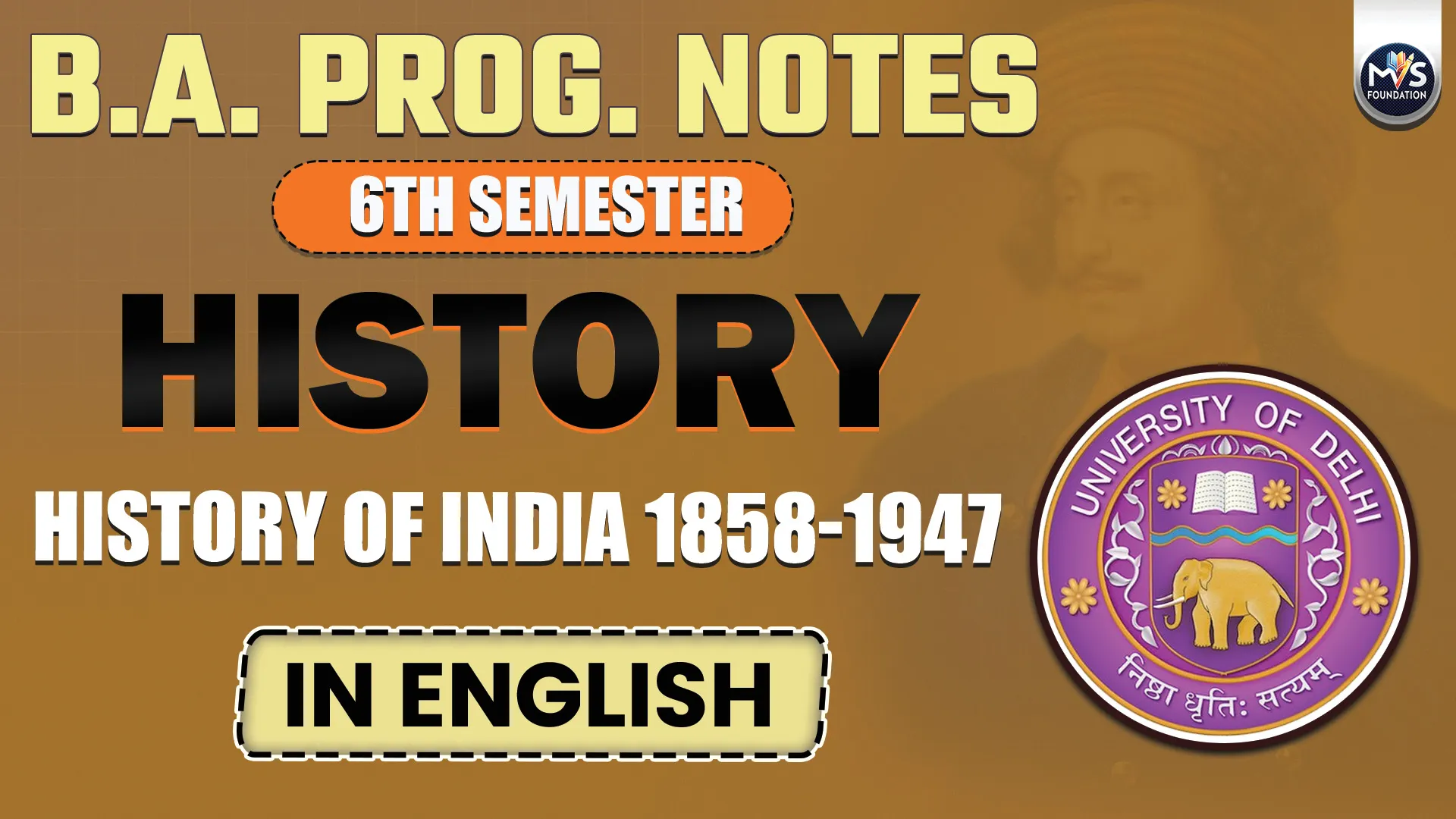
Get in Touch
We will get back to you within 24 hours.
Welcome to MVS Blog

Q.-1 Analyze the background of Socio-Religious Reforms Movements in 19th century India. Highlight the principles and work of Brahmo Samaj.
Answer:
Introduction
During the 19th century, Social and Religious reform movements began in India. Due to British rule and the influence of Western education, people started questioning social evils like the Caste System, Sati Practice, Polygamy, and the Poor Condition of Women. At that time, there was a strong need for change in society. Reformers like Raja Ram Mohan Roy worked for Social Justice, Equality, & Religious Reforms. Because of their efforts, organizations like the Brahmo Samaj were formed, which tried to solve major social problems.
Analysis: Background of Social & Religious Reform Movements in 19th Century India
1. Change in Social Thinking due to British Rule: With British rule in India, new legal and administrative systems were introduced. This made Indians realize the weaknesses in their old systems. People started questioning on caste, religion, the condition of women, and education. Slowly, this led to a social revolution.
2. Impact of English Education and New Ideas: When the British started English education in India, Indian youth learned about Western ideas. Concepts like freedom, equality, scientific thinking, and human rights attracted them. This helped people think against social evils and laid the foundation for social reform movements.
3. Awareness by Social Reformers: Social reformers like Raja Ram Mohan Roy, Ishwar Chandra Vidyasagar, and Swami Dayanand Saraswati raised their voices against the evils in Indian society. They spoke openly about issues like the Sati System, Child Marriage, Lack of Education for Women, & Widow Remarriage. Their efforts created awareness and led to steps for reform.
4. Role of Christian Missionaries and British Scholars Christian missionaries criticized Indian religions and traditions, which motivated Indian scholars to protect and better understand their own culture. British historians also wrote about Indian history and society, which inspired Indians to think and improve themselves.
5. Media and New Thinking about Women's Status: Newspapers, magazines, and books started highlighting the problems in society and made people aware of the need for reform. Especially, there was a strong demand for women's education, rights, and respect. Many reformers and organizations started schools, shelters, and magazines for women, which brought positive changes in society.
Brahmo Samaj
Brahmo Samaj was an important reform movement, which was started by Raja Ram Mohan Roy on 20 August 1828 Its objective was to promote belief in one God in Hinduism oppose superstitions and bring about reform in the society
Raja Ram Mohan Roy
22 May 1772-27 September 1833
Raja Ram Mohan Roy (22 May 1772-27 September 1833) was an Indian social reformer, writer, an philosopher. He is also known as the Father of Modern India. In 1828, he founded the Brahmo Sam which became a leading movement for social and religious reform in the Indian subcontinent.
Principles of Brahmo Samaj :-
Brahmo Samaj believed that there is only one God who creates and takes care of the world. God has infinite power and goodness.
The soul of every human being lives forever, they are answerable to God for their works.
No person or any man-made thing should be worshipped as God.
God speaks to the souls of good people, so there is no need for prophets or holy books to talk to God.
Brahmo Samaj believes that truth is religion. Religious books should be followed as long as they are in accordance with what God teaches.
People should worship God with love and ideals every day.
All people are front of before God, so no one should be discriminated against on the basis of caste, color, race or gender.
Brahmo Samaj does not believe in idol worship, animal sacrifice or rituals.
Functions/Works of Brahmo Samaj:-
1. Abolition of Sati System: Raja Ram Mohan Roy started a movement against the Sati Pratha
in 1818 after seeing his sister-in-law being forced to commit Sati. He made a strong decision to end this brutal practice. Because of his efforts, the British government declared Sati illegal and banned it in 1829.
2. Opposition to Polygamy and Caste System : Raja Ram Mohan Roy fought against
polygamy and the caste system. He believed that marriage should be based on love and respect, not on caste or business deals. He supported equal rights for all and wanted to end caste discrimination in society.
3. Support for Farmers: Raja Ram Mohan Roy supported the rights of farmers. He did not
want the landlords to charge excessive rent from the farmers. He demanded the British government to make laws to protect the rights of farmers on land rent, so that farmers could be treated fairly.
4. Freedom of the Press: Raja Ram Mohan Roy also fought for the freedom of the press. In
1823, he demanded that the British government give freedom to newspapers. In 1835, the government removed strict rules on newspapers, which helped Indians enjoy press freedom.
5. Contribution to Education and Literature : Between 1815 and 1820, Raja Ram Mohan
Roy wrote 14 books in Bengali and 10 in English. He translated Hindu religious texts into English, Bengali, and Hindi. In 1820, he wrote books like The Precepts of Jesus, bringing new ideas in religion and literature.
6. Debendranath Tagore and Keshab Chandra Sen: After Raja Ram Mohan Roy's death,
Debendranath Tagore revived the Brahmo Samaj. He also started the Tattwabodhini Sabha-1839. Later, Keshab Chandra Sen helped take Brahmo Samaj forward and worked for social reforms. But his liberal views caused divisions within the group.
Conclusion
In the 19th century, social and religious reform movements brought major changes in India. The Brahmo Samaj, founded by Raja Ram Mohan Roy, fought against Sati, Polygamy, and the Caste System. It also worked for religious freedom, women's rights, and equality in society.
0 Response